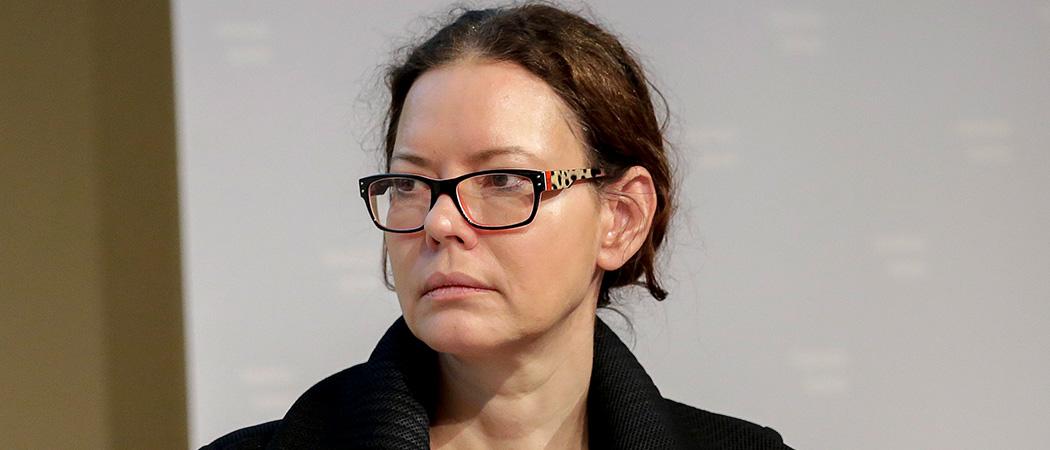Sharing costs and access to large science labs was the high point of early attempts to create a single EU market for research. But as ERA is rebooted, these labs are beset by budget woes and policy changes

Jana Kolar, executive director of Central European Research Infrastructure Consortium and chair-elect of the European Strategy Forum on Research Infrastructures (ESFRI). Photo : BKA/Ines Bind
Setting up shared European research infrastructures is the key achievement of previous attempts to establish a single European Research Area (ERA), but these large labs are now caught in the cross hairs of European Commission plans to revitalise the single market for research, cuts to the budget, changes in oversight and increased controls over international collaborations.
The question of how research infrastructures fit into ERA remains to be decided by the Commission, which in the thick of setting out the policy agenda, expected to be published this autumn.
“How ESFRI sits in [ERA] depends on the actions that will be defined,” said Jana Kolar, executive director of Central European Research Infrastructure Consortium and chair-elect of the European Strategy Forum on Research Infrastructures (ESFRI), the body that coordinates strategy for pan-European research labs. “I wish that ESFRI would contribute to as many of the relevant actions as possible,” Kolar told Science|Business.
Kolar would like ESFRI to be “better integrated” in the renewed ERA. “Europe is changing, and we have to identify the gaps with more respect to the policies, and integrate ESFRI research infrastructures in the renewed European Research Area,” she told an ESFRI meeting last month.
To back this up, ESFRI will launch a new roadmap for research infrastructures in December, including proposals for eleven new labs worth a total of €4.16 billion. The 2018 edition of the roadmap was far more modest, with €674 million in total planned investments.
However, member states have since become more adept at accessing EU structural funds to build research infrastructures, and according to ESFRI, the labs are getting increased political backing. In the new roadmap, on average, seven governments gave political support at ministerial level to each project, while institutions from 14 countries will participate in each selected project at the scientific level.
Currently, ESFRI is responsible for coordinating development of 55 research infrastructures, of which 37 have been implemented, across all fields of science, mobilising close to €20 billion. Of these, 21 are designated European Research Infrastructure Consortia (ERIC), a legal form enshrined in EU law - and the only EU regulation in the European Research Area (ERA) framework.
A pact for research and innovation
The level of member state support ESFRI has for its 2021 roadmap looks like good news for Mariya Gabriel, EU Commissioner for research and innovation, who last week published a pact for research and innovation, aiming to convince member states to raise public and private R&D investments to 3% of GDP.
As part of Gabriel’s mission to revamp the ERA, the pact calls on member states to come up with plans that draw on a mixture of EU and national funding, to capitalise on research infrastructures to help European science compete globally.
The pact says member states should spend 5% of national R&D budgets on joint programmes with other member states, research infrastructures and industry partnerships, by 2030. Member states are also invited “on a voluntary basis” to establish further national investment targets for research infrastructures.
The Commission also wants to update the governance structure for research and technology infrastructures within ERA.
Foreshadowing this, in a white paper published last year, ESFRI called for better coordination and more efficient use of research infrastructures. “There are so many possibilities for research infrastructures in ERA,” said Kolar.
The white paper also calls for more investment to meet new scientific needs and contribute to global challenges. As the pandemic unfolded in 2020, research infrastructures were able to adapt quickly and come up with dedicated services for COVID-19 research and reorganise other experiments so that scientists could avoid travel and mail in their samples during lockdowns. “We could do the same for other challenges,” Kolar said.
Kolar takes over leadership of ESFRI next January, but before that the forum will the new roadmap and priorities for the next few years at a meeting in December. By then, the Commission’s ERA policy agenda should be laid down.
“During this next term, ESFRI’s work should be further integrated in the new ERA policy,” said Anna Panagopoulou, Commission director with responsibility for ERA.
Research infrastructures could help the EU and national governments to address societal challenges, support closer cooperation with stakeholders and help bridge the research gap in Europe. The new ERA “is full of opportunities for research infrastructures,” said Kolar. “I hope to make the best of it.”
Technology sovereignty tension
At the same time as seeking to promote pan-European openness in research, the Commission is closing the door to international scientific cooperation. That leaves research infrastructures having to strike the right balance between openness and protecting EU technologies.
“In some cases, we need global cooperation in order to address societal challenges,” said Kolar. “On the other hand, you have the need for strategic autonomy.”
Research labs typically support basic research, but some facilities host experiments for technologies that are closer to market and could be affected by new rules for international science cooperation.
EU member states are analysing a Commission proposal for a new global approach for R&D. “Let’s see where this goes,” said Kolar.
In another unsettling move, in April the Commission handed responsibility for research infrastructures to the Research Executive Agency, as part of a reshuffle that saw the directorate general for research downsize from 50 to 43 units, while the number of executive agencies grew from 29 to 48. “I hope to use the current situation for the benefit of research infrastructures,” said Kolar. “It’s too early to comment what will be the impact.”
Budget woes
Research infrastructures are usually built with a mix of national and EU financing, but money from the EU Framework research programmes provides much needed financial support for developing and upgrading facilities. The budget for research infrastructures in Horizon 2020 was €2.48 billion, spread over seven years. In Horizon Europe the budget is lower, at €2.4 billion from 2021 -2027, with the first €607 million to be spent in 2021 and 2022.
Cristian Bușoi, chair of the European Parliament research and industry committee, ITRE, says the budget for research infrastructures in Horizon Europe is smaller than expected. “We have to see how at some point we can improve this budget inside the [Horizon] envelope,” said Bușoi. If that is not possible, the EU should nonetheless aim to implement everything it has set out to and to better prepare the next budget, Bușoi added.
Under Horizon Europe the money for research infrastructures is for developing and consolidating facilities, with labs expected to come up with services to support health research and help accelerate the green and digital transformation of the economy.
Projects to develop the next generation of scientific instruments and methods will also be funded. Research infrastructures are being encouraged to source money from other EU and national programmes, such as regional and structural funds, the European Social Fund, and Invest EU.





 A unique international forum for public research organisations and companies to connect their external engagement with strategic interests around their R&D system.
A unique international forum for public research organisations and companies to connect their external engagement with strategic interests around their R&D system.